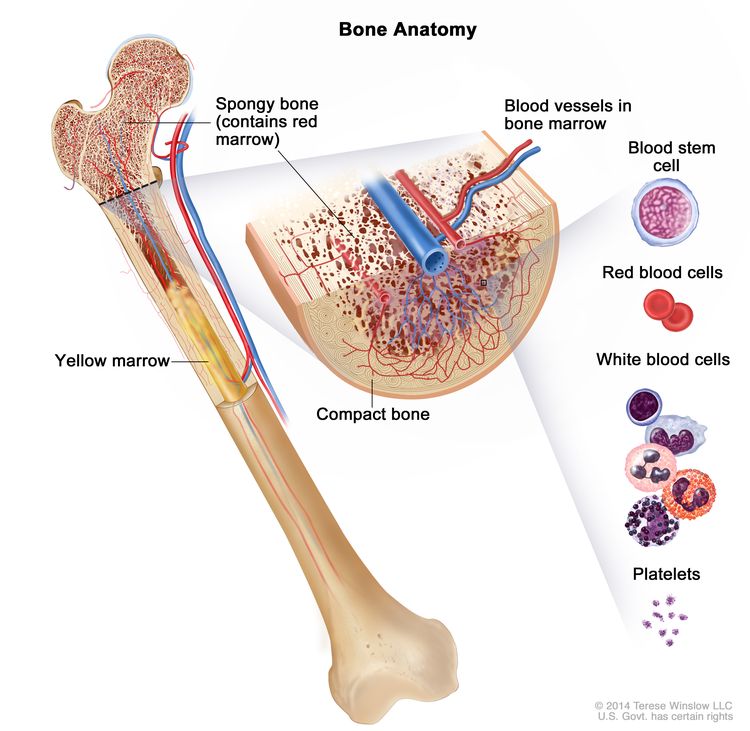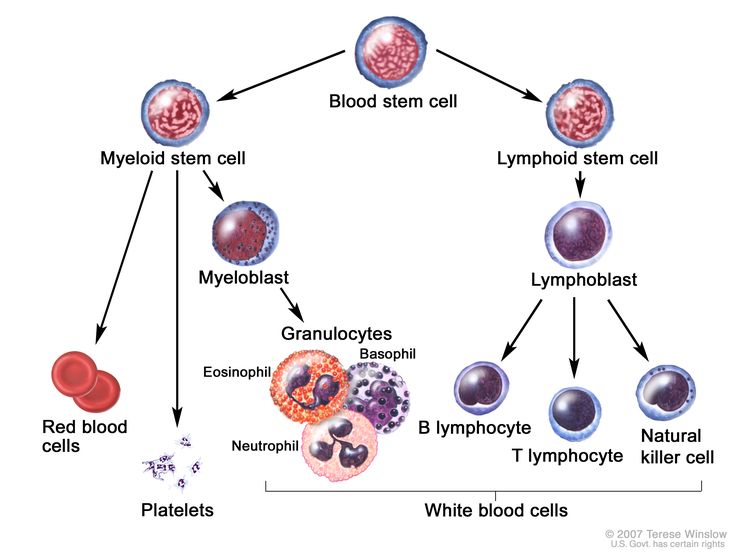Childhood Acute Lymphoblastic Leukemia Treatment (PDQ®)–Patient Version
General Information About Childhood Acute Lymphoblastic
Leukemia
KEY POINTS
- Childhood acute lymphoblastic leukemia (ALL) is a type of cancer in which the bone marrow makes too many immature lymphocytes (a type of white blood cell).
- Leukemia may affect red blood cells, white blood cells, and platelets.
- Past treatment for cancer and certain genetic conditions affect the risk of having childhood ALL.
- Signs of childhood ALL include fever and bruising.
- Tests that examine the blood and bone marrow are used to detect (find) and diagnose childhood ALL.
- Certain factors affect prognosis (chance of recovery) and treatment options.
Childhood acute lymphoblastic leukemia (ALL) is a type of cancer in which the bone marrow makes too many immature lymphocytes (a type of white blood cell).
Childhood acute lymphoblastic leukemia (also called ALL or acute lymphocytic leukemia) is a cancer of the blood and bone marrow. This type of cancer usually gets worse quickly if it is not treated.

ALL is the most common type of cancer in children.
Leukemia may affect red blood cells, white blood cells, and platelets.
In a healthy child, the bone marrow makes blood stem cells (immature cells) that become mature blood cells over time. A blood stem cell may become a myeloid stem cell or a lymphoid stem cell.
A myeloid stem cell becomes one of three types of mature blood cells:
- Red blood cells that carry oxygen and other substances to all tissues of the body.
- Platelets that form blood clots to stop bleeding.
- White blood cells that fight infection and disease.
A lymphoid stem cell becomes a lymphoblast cell and then one of three types of lymphocytes (white blood cells):
- B lymphocytes that make antibodies to help fight infection.
- T lymphocytes that help B lymphocytes make the antibodies that help fight infection.
- Natural killer cells that attack cancer cells and viruses.

In a child with ALL, too many stem cells become lymphoblasts, B lymphocytes, or T lymphocytes. The cells do not work like normal lymphocytes and are not able to fight infection very well. These cells are cancer (leukemia) cells. Also, as the number of leukemia cells increases in the blood and bone marrow, there is less room for healthy white blood cells, red blood cells, and platelets. This may lead to infection, anemia, and easy bleeding.
This summary is about acute lymphoblastic leukemia in children, adolescents, and young adults. See the following PDQ summaries for information about other types of leukemia:
Past treatment for cancer and certain genetic conditions affect the risk of having childhood ALL.
Anything that increases your risk of getting a disease is called a risk factor. Having a risk factor does not mean that you will get cancer; not having risk factors doesn’t mean that you will not get cancer. Talk with your child's doctor if you think your child may be at risk.
Possible risk factors for ALL include the following:
- Being exposed to x-rays before birth.
- Being exposed to radiation.
- Past treatment with chemotherapy.
- Having certain genetic conditions, such as:
- Down syndrome.
- Neurofibromatosis type 1.
- Bloom syndrome.
- Fanconi anemia.
- Ataxia-telangiectasia.
- Li-Fraumeni syndrome.
- Constitutional mismatch repair deficiency (mutations in certain genes that stop DNA from repairing itself, which leads to the growth of cancers at an early age).
- Having certain changes in the chromosomes or genes.






















.png)











No hay comentarios:
Publicar un comentario